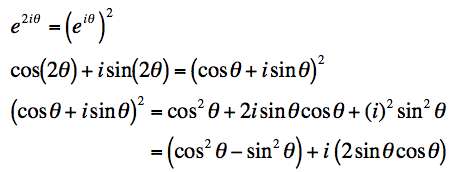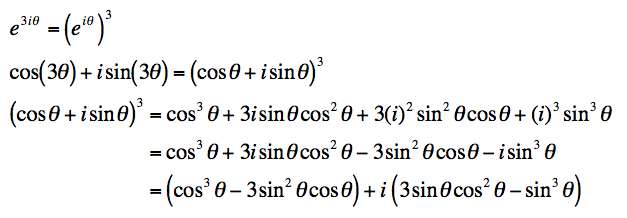
Problems for
Intermediate Methods in Theoretical Physics
Edward F. Redish
 |
Problems for Edward F. Redish |
Solution
The trick here is to express the exponential of i times 2θ in two ways: as itself and as the square of i the exponential of i times θ. We then expand using deMoivre's theorem on both sides and just expand out the square. Here's how it works.

We now equate the real and imaginary parts and get our result.
 .
.
It's a bit more complicated for the cube since we need to expand a cube. Remember this is how it works (see a reference to Pascal's triangle):
![]()
When we do this with the complex exponential, here's what we get:

Here, we had to note that i2 = -1 and i3 = -1. The result is:

For the fourth power, it's even messier. Here we have to note that i4 = 1.

.
| University of Maryland | Physics Department | Physics 374 Home |
|---|---|---|
 |
 |
 |
Last revision 16. October, 2005.